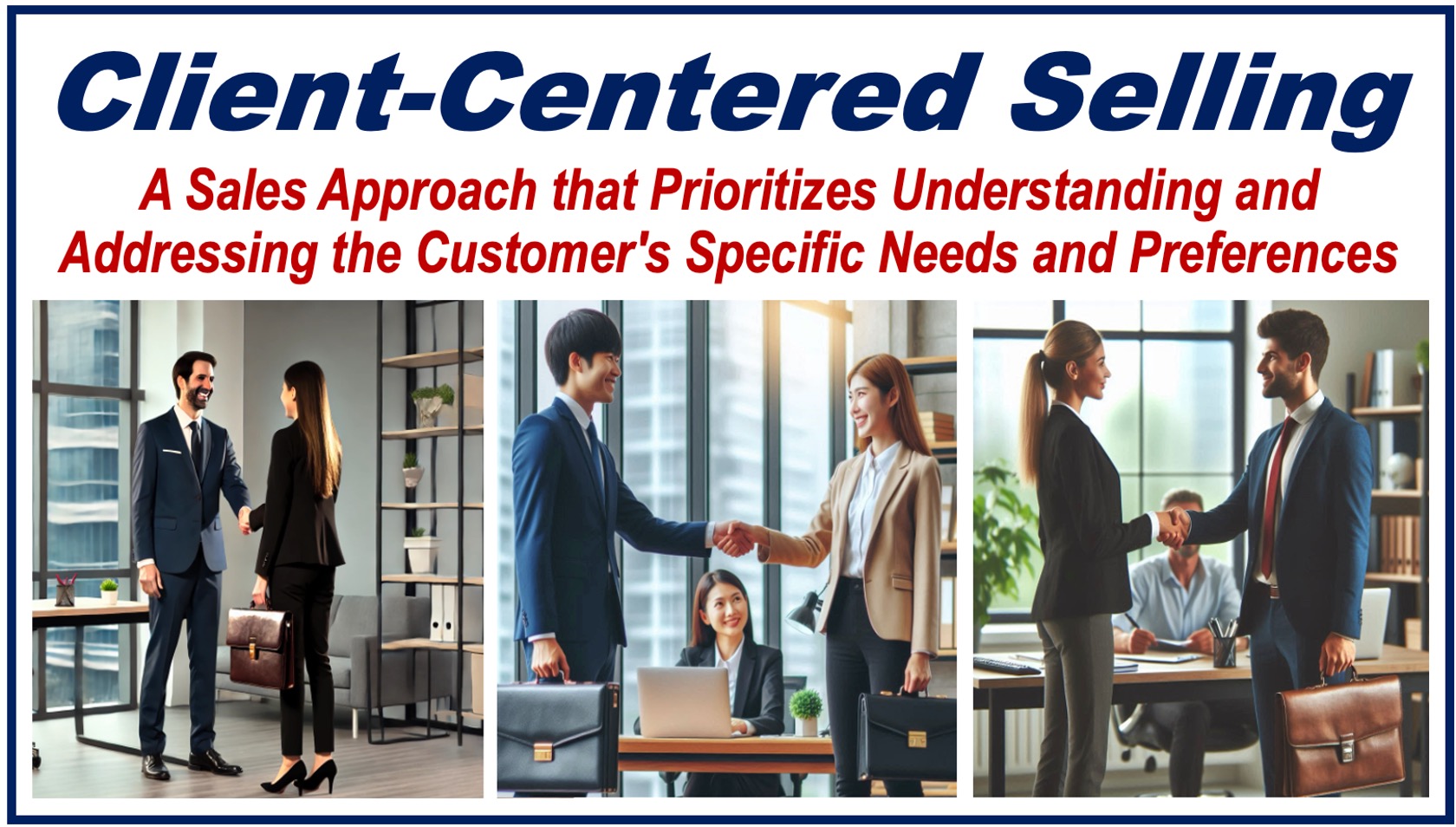When you sell, do you focus on understanding and meeting the needs of your customer? If you do, you practice Customer-Centric Selling – you are a Customer-Centric Seller. We can also use the terms Client-Centric Selling and Client-Centric Seller.
Traditional sales methods emphasize the features and benefits of a product or service. With a customer-centric approach, you place the customer at the center of the sales process.
Key Principles of Customer-Centric Selling
Understanding Customer Needs:
As a customer-centric seller, you start by cultivating a deep understanding of your customer’s needs and *pain points. This involves active listening and asking specific questions to uncover what the customer truly wants.
* Pain points are specific problems or challenges that customers experience which your product or service can address.
Building Relationships
You must establish a strong relationship with your *prospect or customer. For this to happen, you must be trustworthy, reliable, and show genuine interest in helping the customer solve their problems.
* A prospect is a potential customer who has been identified as someone who might be interested in a company’s products or services. For the rest of this article, please note that the term “customer” also includes “prospect,” and vice versa; the same applies to “product” and “service.”
Personalized Solutions
Rather than offering a one-size-fits-all product, you tailor your solutions to fit the specific needs of each customer.
This personalization increases your chances of achieving a successful sale and long-term customer satisfaction.
Value Over Features
Emphasizing the value that your product brings to your customer’s life or business is crucial. This means that you focus on the benefits and outcomes rather than just listing features.
Continuous Improvement
As a customer-centric seller, you continually seek feedback and strive to improve your understanding of your customer. This ongoing effort helps you adapt to changing customer needs and remain relevant.

Benefits of Customer-Centric Selling
There are many benefits associated with a customer-centric sales approach. Let’s take a look at four of them:
Increased Customer Satisfaction
By focusing on your customer’s needs, you can provide solutions that genuinely help, leading to higher customer satisfaction and loyalty. Your loyal customers are more likely to refer new clients to you.
Higher Conversion Rates
When customers feel understood and valued, they are more likely to make a purchase. This approach can lead to higher *conversion rates compared to traditional selling methods.
* The term conversion rate refers to the ratio of customer visits to sales. For example, if you visit ten customers and make two sales, your conversion rate is 20%, or 1-in-5.
Long-Term Relationships
If you are a customer-centric seller, you are more likely to foster long-term relationships with your buyers. Your chances of receiving repeat sales are also much greater.
Better Market Understanding
Engaging deeply with your customers provides you with valuable insights into market trends and customer behavior.
This information can help you develop a more effective business strategy and create products that better meet your customers’ needs and expectations.
Implementing Customer-Centric Selling
Training Sales Teams
Equip your sales teams with the skills and knowledge to understand and address customer needs effectively.
Training should focus on active listening, empathy, and communication skills.
Leveraging Technology
Use CRM (Customer Relationship Management) systems to track your customer interactions and preferences.
This technology can help you provide more personalized experiences and maintain strong customer relationships.
Encouraging Feedback
You should seek customer feedback to understand their experience and areas for improvement.
Use this feedback to refine your sales approach and product offerings.
Aligning with Marketing
Ensure that marketing efforts are aligned with the customer-centric approach.
Your marketing messages should resonate with customer needs and highlight the value proposition clearly.
Customer-centric selling is a powerful approach that prioritizes the needs and preferences of the customer.
By understanding and addressing what the customer truly wants, you can build stronger and longer-lasting relationships, achieve higher sales, and foster brand loyalty.
This approach not only benefits the customer but also helps your business succeed in today’s fiercely competitive marketplace.
